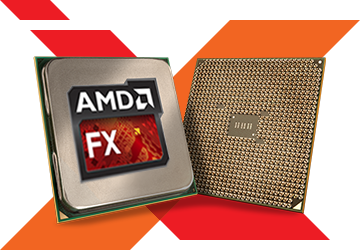说AMD已触底反弹,有这三大理由够不够
说2016年是AMD的生死年毫不夸张。这家正苦苦挣扎的芯片厂商在PC市场上不敌英特尔份额不断丢失,GPU市场上又将更多份额输给了NVIDIA,现在,AMD正准备发布两款重要产品以争取扭转局面,我们说这一目标有可能实现有三大理由:
I'm not exaggerating when I say that 2016 is a make-or-break year for Advanced Micro Devices (NASDAQ:AMD). The struggling chip company, dragged down by a slumping PC market, inferior products compared to Intel (NASDAQ:INTC), and major share losses to NVIDIA (NASDAQ:NVDA) in the GPU market, is readying two major launches that have the potential to turn the tide. Here are three reasons why shares of AMD could rise going forward.
Regaining ground in the GPU market
Prior to the third quarter of 2014, AMD was a strong No. 2 player in the discrete graphics card market, claiming a unit market share of roughly 40%. NVIDIA was the leader, but the gap between the two companies was modest. This changed toward the end of 2014, when NVIDIA's disruptive GTX 970, and AMD's lack of a response, led NVIDIA to consolidate its lead. During the third quarter of 2015, NVIDIA claimed a unit market share in excess of 80%.
Both AMD and NVIDIA are expected to launch brand-new GPUs later this year, and with both companies using advanced 14/16 nanometer manufacturing processes after years stuck at 28 nm, the jump in performance and efficiency should be substantial. With such a low market share, if AMD can simply match NVIDIA in terms of performance-per-dollar, the company should be able to win back at least some market share.
Market share gains can't come soon enough for AMD. During 2015, the company's computing and graphics segment, which includes both GPUs and CPUs, posted a $502 million operating loss on $1.8 billion of revenue. If AMD manages to score a win with its Polaris GPUs, the company's financial results and its stock price could look quite a bit better a year from now.
Fixing past mistakes
AMD's CPUs over the past five years, based on the Bulldozer microarchitecture and its various revisions, have been a disaster for the company. AMD has been losing market share to Intel in both the PC CPU market and the server CPU market for years, driven in part by the fact that Intel's chips have held a major advantage when it comes to single-threaded performance. AMD is hoping to fix that problem with the launch of its Zen microarchitecture, set for release toward the end of 2016.

With Zen, which will be built on a 14 nm process, AMD is promising a 40% gain in instructions per second, a measure of single-threaded performance. With Intel delaying the launch of its 10 nm manufacturing process, the manufacturing process gap that AMD has been subject to for quite some time will narrow substantially. Intel may finally face real competition in the PC CPU market and, eventually, in the server CPU market.
This all assumes that Zen is launched on time, and that AMD achieves the promised performance gains. If Zen fails to win back a meaningful amount of market share from Intel, it's difficult to imagine a scenario where AMD returns to profitability. New graphics cards will help, but both the GPU and CPU businesses will need to improve in order erase the massive losses AMD posted in 2015. If Zen lives up to the hype, it would be a very strong sign that AMD's turnaround is for real, and that could send the stock soaring.
Winning more semi-custom deals
The only bright spot for AMD over the past couple of years has been its semi-custom business, which at the moment is comprised of SoCs that power the major game consoles. AMD has announced three additional semi-custom wins, and revenue from some of those deals will begin to be recognized this year.
- 中国正探寻如何快速进驻HPC芯片领域(03-23)
- 一季度AMD全球处理器市场份额遭英特尔蚕食(07-01)
- 显卡市场份额之争 AMD逐渐让位NVIDIA(08-04)
- AMD 2016-2017 x86处理器路线图曝光(05-08)
- AMD结合显示与传统芯片力拚数据中心市场(05-18)
- 通过创新架构和电源技术提升处理器能效(08-05)
